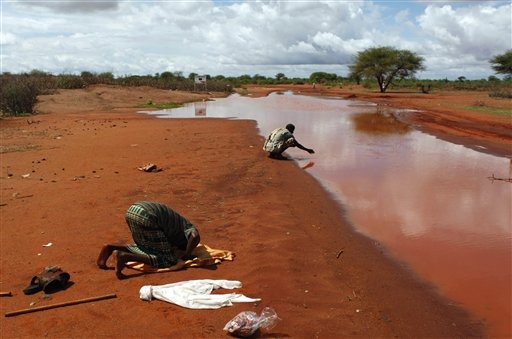Devastating drought alters life for Kenya nomads
By KATHARINE HOURELD (AP) – Nov 1, 2009 DELA, Kenya — When 64-year-old Jimale Irobe was a young man, he guided his herds of cows and camels through knee-high grass. These days the scrubby blades barely reach his ankles even in the rainy season, and there is never enough grass to go around. The cattle cannot feed, and the nomadic families that depend on them for milk and meat cannot survive. So Irobe scrapes out a living by selling charcoal made from burning the trees in the fields where his father’s herds once grazed. “Now there are many people and the rains are not coming,” said Irobe, whose wisps of beard can’t conceal gaunt cheeks. The traditional way of life for Kenya’s roughly three million nomads is rapidly giving way under the pressures of increasingly severe and frequent droughts, coupled with a rapidly rising population. In one particularly drought-prone district in Kenya, up to a third of the herdsmen have had to settle permanently because they have lost so many animals. As they gather in one place, they strip the nearby land of trees and grass to make houses. Their few remaining animals consume the last blades of grass. Eventually, as has happened in the northern village of Dela, there is just a cluster of tired, hungry people in the sand waiting for aid. … “It’s got to the point where the rains can stabilize the situation, but they don’t last long enough to provide a recovery,” said Martin Karimi from the European Commission’s aid arm, which is developing projects to help villages store water. “Also, when rain does fall, it tends to be over shorter periods and more intense.” The sandy soil doesn’t absorb the intense rainfall, so it just sits on the ground before evaporating. …
